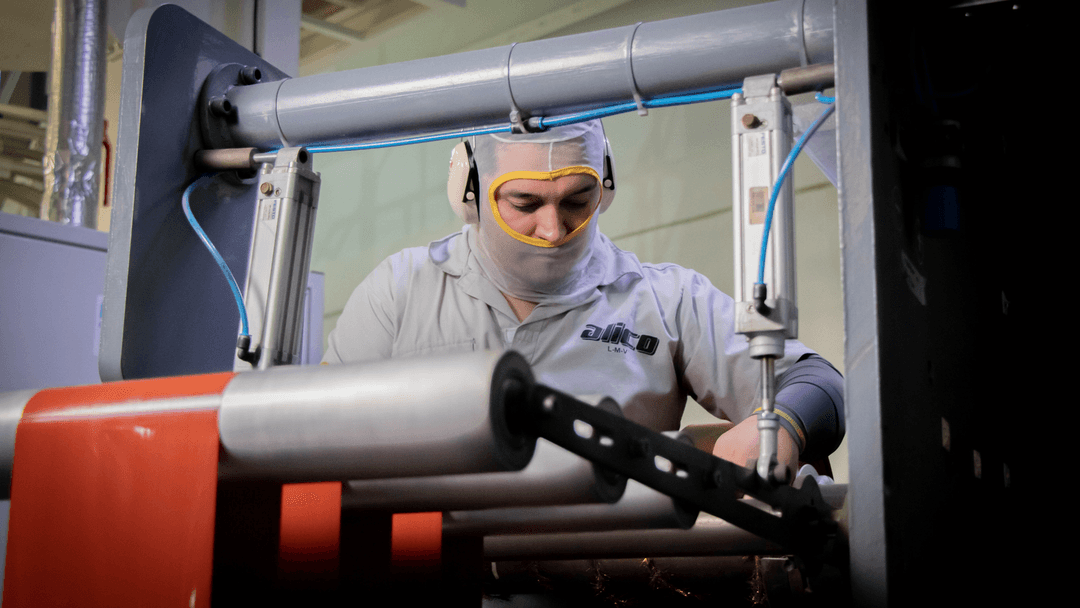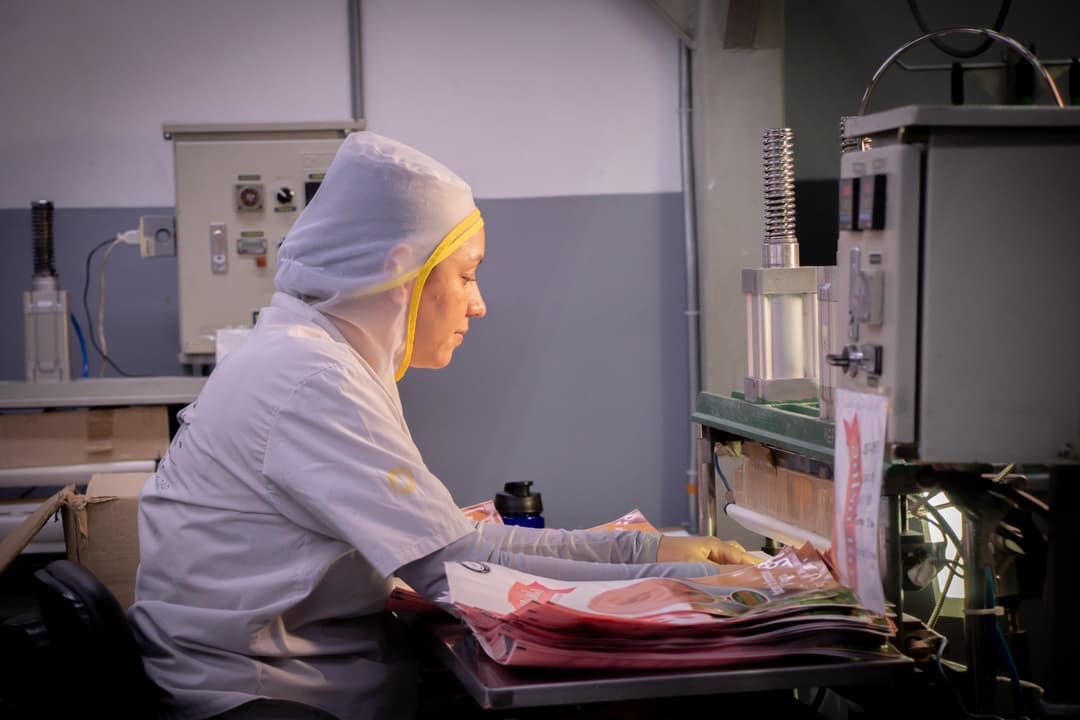Notes from the Field: The Airport Analogy
Ivan Rebolledo
Chief Revenue Officer at TCP

About Notes from the Field
As an enterprise sales rep and leader for well over two decades I have had the privilege of observing how customers evolve in their drive for execution excellence. From ERP, CRM, Business Intelligence, Automation, Deep Analytics, MES, etc., and now Artificial Intelligence. I’ve seen the successes and the failures, challenges overcomed, partnerships built, strategies deployed, business soar, and a few crashes as well. In these Series I try to see all this from the perspective of an observer not just a sales guy, trying to identify what makes technology projects and companies thrive. I hope you find it interesting and if possible even fun, We shall see. For now, welcome to Notes from the Field: The Magic of Capacity Planning.
What do Airports and ETO manufacturing have in common? And if they do indeed have similarities, how do they manage capacity?
This comparison came to light during a recent interview with a long-time Epicor Kinetic customer, and it struck me as if I were just two weeks into my job instead of having 25 years of experience. It hit me in the face and I was truly taken aback. It wasn’t just the complexity of their process, but also their ability to manage accelerated growth over the last 12 years. They have quadrupled their capacity, sales, and warehouse space —all backed by data—without missing a single bit.
This is not just a story about our client’s growth; it is a testament to their genius in mastering capacity management and turning what could have been an insurmountable challenge into their core competitive advantage. Their secret? They operate their flexible packaging plant like an air traffic control tower.
PART I
The Airport Analogy: Sequencing for Maximum Capacity
Our client is a leader in flexible packaging who has experienced tremendous growth over the last 12 years, quadrupling their capacity, sales, and warehouse space. The complexity of their processes and the clarity of their vision struck me immediately. They drew an insightful comparison between their operations and those of an airport:
Airports utilize sequencing—the way air traffic controllers (ATC) organize aircrafts. Sequencing manages takeoffs, landings, and ground movements for safety and efficiency, directly impacting an airport's capacity.
In an airport, minimum separation standards limit the maximum arrival and departure rate on a runway. This is how the sequencing principle operates:
Separation Standards - A minimum gap of 3 nautical miles sets the upper limit on arrivals and departures—approximately 40 per hour on a single runway. Sequencing ensures those separations are maintained. If sequencing is inefficient—significant gaps or poor order—actual throughput may fall far below the theoretical maximum.
Balancing Traffic - Controllers interleave arrivals and departures to maximize runway utilization and prevent delays.
Wake Turbulence - Smart sequencing groups heavy aircraft before medium and small aircraft, minimizing required spacing and increasing overall capacity. A small plane must maintain extra spacing behind a heavy aircraft. Poor sequencing can reduce capacity by placing a small plane behind a heavy one.
Surface Capacity - Taxiway and gate congestion —who pushes back, who holds short—impacts runway throughput. Ground sequencing prevents taxiway and gate bottlenecks, ensuring the runway “pipeline” continues to flow.
Tools to Boost Capacity - Time-Based Separation: adjusts spacing dynamically based on wind conditions, allowing for more landings in strong headwinds. Performance-Based Navigation (PBN): for parallel approaches with precise tracks that can double capacity.AMAN/DMAN systems: To ensure smooth arrival and departure flows, preventing the runway from being idle.
PART II
Flexible Packaging Manufacturing: Where High Variability Meets Velocity

Most people never pause to consider the wrapper around their favorite kielbasa, frozen vegetables, or fresh mozzarella as a piece of fine engineering. Yet that's precisely what it is.
Flexible packaging production—which encompasses the wrapper around your frozen food or cheese—sits on the edge between Engineer-to-Order (ETO) and Make-to-Order (MTO).
For mid-sized companies like our client, managing this production is a continuous challenge requiring precision, agility, and speed. No two orders are alike.
The challenge lies in serving customers effectively within the constraints of available space, which differs significantly from larger global corporations. Companies like Amcor, Huhtamaki, or Sealed Air handle massive orders, absorbing the complexity of machine setup and running production for extended periods to produce enormous volumes. Our client, in contrast, handle small batches for smaller clients, yet faces the same level of complexity. Virtually no job is identical; every sales order comes with unique specifications.
To maximize capacity, design, setup, and execution, requires orchestration with millimetric precision. Today, they manage roughly 18,000 jobs per year, producing about 15,000 tons of finished products.
Returning to the airport traffic control analogy, order sequencing in their plant operates just like sequencing aircrafts:
Substrate Grouping - Jobs are grouped by material to avoid costly machine purges.
Ink Arrangement - Inks run from light to dark to minimize wash-ups.
Lamination Batching: Laminations are batched by adhesive type to reduce changeovers.
Prioritization - High-barrier structures are grouped like "long-haul flights," and food-grade runs get priority, mirroring "emergency clearances".
Speed Matching - Thin, fast films are scheduled before thicker laminates to maintain rhythm, just as fast aircraft are sequenced first.
In both the tower and the plant, efficiency is crucial. Every transition must save time, prevent waste, and preserves capacity; poor orchestration can consume 20–30% of capacity.
When our customer chose Epicor ERP in 2012, they were a family-owned business generating $30–40 million USD, perfectly fitting our Ideal Customer Profile (ICP). They evaluated all the major ERP contenders, and we emerged on top with 87% coverage, although competitors were close behind. The brilliance of their choice became apparent years later: they didn't pick Epicor simply for the boxes it ticked, but for its ability to address the 13% gap, the space where their most critical challenges lived. They aimed not merely to enhance existing ERP functions; instead, their vision was to “bend” and adapt the system to their core processes, their "secret sauce"—the key factor that would either drive growth or risk extinction.
PART III
The Customer Takes Charge: ALICO's Unfiltered Genius

Our customer, ALICO S.A.S. / BIC from Medellín, Colombia is a regional leader in their space focused on excellence and quality combined with unparalleled customer service, in their world delivery time and precision are critical, and in every sense the reason of their success.
After implementing Epicor Kinetic across the entire business, utilizing every module and function that is to be expected as the bare minimum for any ROI driven ERP investment, ALICO was already thinking about the next steps. They recognized that no world-class ERP, including Epicor, could address the specific functional gap they faced.
Their genius was that, understanding this, they focused on the technology and flexibility of the new system so that it could be tailored to their needs. Instead of settling for the shortcomings, they went on to develop a solution themselves. Their "secret sauce" was job sequencing. Alico quickly realized that no world-class ERP, including Epicor, could manage this functional gap out of the box.
Here’s how they tackled the challenge:
They Engineered the Solution - They focused on the new system's flexibility and worked with experts from universities in the USA and the University of Medellin to develop an ad hoc job sequencing algorithm.
The Algorithm Integration - Epicor Kinetic supplies engineering and job specifications to the custom algorithm, which then returns the optimal sequencing scenario to enhance Epicor's planning capabilities. This innovation resolved the core of their operational excellence.
However, this wasn’t the end of their journey. Once Alico achieved operational excellence and streamlined their business for maximum performance, they progressed to the next level of integration.This meticulous execution allowed them to leverage their rich operational data in new ways:
Predicting Future Capacity - They accurately anticipate their growth needs, including capital equipment investments.
Timing Machine Purchases - Since acquiring and installing new, complex machinery can take up to 18 months, they utilize their data to precisely predict when to purchase new equipment.
This ensures that it is ready and operational the moment demand spikes, allowing them to sustain profitable growth without missing business opportunities.
How is that for future capacity planning? There are various ways to achieve this of course, and tools are available, mainly designed for very big enterrpise operations, but in this case, the customer took control and made it happen on their own, starting from their initial ERP selection. They knew from day one what and how to get what they needed which made every step of their evolution in their ERP implementation a calculated part of a master plan! This is pure, unfiltered genius.
ALICO S.A.S / BIC is an excellent example of a customer who truly understood their core process and leveraged their ERP selection to gain the flexibility needed to develop a world-class solution in-house.
You can hear the story directly from them:
You can also read the detailed case study visiting:
https://www.tcpamericas.com/en/case-studies/Alico-data-driven-growth